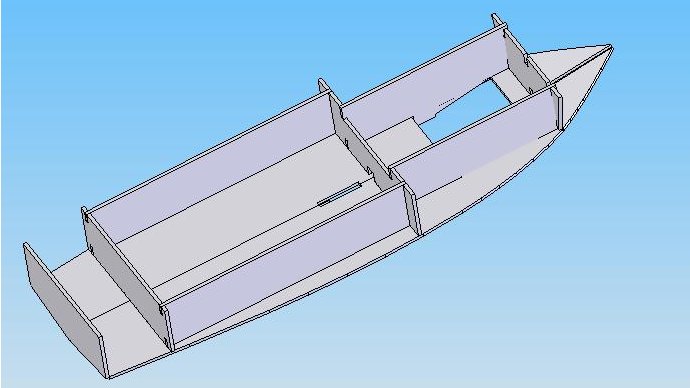Making an EeZeBILT
The Keil Kraft 'EezeBilt' boat range occupied an odd position between simple wooden plank rafts and proper boat building. You actually made a proper hull, with a simplified construction, and in balsa, which made the wood easy to cut, shape and glue. This gave a very good introduction to 'proper' model boats, such as the Aerokits range, later on.
The boats are all made the same way - a flat balsa 'hull base' is made up to be the chine line, then another is made to be the deck. Formers on top of the chine plate support the deck, and triangular formers beneath support the hull bottom skinning. You end up with an 'egg-box' structure.
Given a set of die-cut parts, this build technique is simple to do - just like making a jigsaw puzzle. It automatically creates a straight, symmetrical hull. The huge advantage of it is that a child can create a sophisticated hull with no assistance from an adult at all, so they get a strong feeling of achievment.
The disadvantage of this system is that it creates a flat chine, making the smaller boats a little 'blunt at the front'. This is avoided in the Terrier by tilting the front of the balsa plate up slightly, and in the Mermaid by having a huge bow curve!
These diagrams shows the general construction principles. If a set of pre-cut parts is made up from the
plans elsewhere on this site, a young child should be able to create a creditable boat without further help....
First, glue the two 'hull base' plates together to make the base...
Then, add the top formers. There are usually only a few.
Before the formers are fully glued, add the hull braces. Now the structure will start to get quite stiff...
Turn it over and add the Keel formers. There are two, with a small gap left for the propellor shaft...
Add the two deck halves on top.
Add the pairs of bottom formers, directly below the top formers. Now add the motor mount, motor and propellor shaft, skin the hull and then it is finished...








